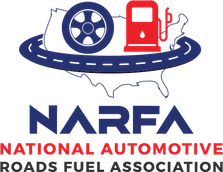Benefits of Conducting a Safety Orientation for New Employees
Management needs to understand the benefits of conducting a safety orientation for new employees:
- Employees become aware of the health and safety hazards on the job, controls for these hazards and how they can affect their safety and the safety of others.
- Helps reduce the risk of potential injuries and accidents.
- Meets regulatory requirements (demonstrates due diligence).
- Increases competence of the new employee.
- Contributes to building a retention culture within the organization, thereby reducing turnover.
- Demonstrates the organization’s ethical obligation to protect the employee from harm.
The length of time required for orientation training cannot be defined, as it will depend on the workplace and the specific job and tasks. Orientation training should not consist of a whirlwind of checklists and safety manuals handed to the new employee. Training needs to be practical and hands on, and should focus on the skills the employee must develop to be successful at his/her job. This will help management to identify exactly the information that must be communicated to the new employee so he/she can perform their job safely, and is all part of a strong safety and health management system.
Evaluate the employee’s training needs.
For new employees, a good starting point for training is to compare the employee’s job description to the job hazards. If your organization has not conducted a job safety analysis now is the time to develop them. The job safety analysis should describe
- All of the hazards to which employees will be exposed
- Control mechanisms for those hazards
- Contact information for the direct supervisor, if the employee requires assistance or has questions.
Not every employee may need a full new-hire orientation. For example, if the employee is returning to the job after a period of absence, the employee may need a simple one-on-one interview with a supervisor who can tell the orientation trainer if the returning employee needs information about a specific topic.
An organization or trainer should never presume or take for granted that all employees returning to the workforce after a period of absence will be thoroughly familiar with all the policies, procedures and codes of practice for their department(s) or the entire organization. It is up to the organization to assess all returning employees’ knowledge of the organization’s health and safety management system and provide the necessary training to the employees who need thorough orientation training.
Develop a plan to train employees
If possible, orientation training should be a one-on-one process. Although it may seem time consuming, one-on-one training allows the trainer to spend adequate time with the new employee to review all the necessary information to ensure the employee is knowledgeable about how to do his/her job safely. Plan to sit down with the new employee and personally review policy and procedure documents. Take the new employee on a personal tour of the facility, detailing items such as introductions to co-workers and staff, emergency exits, first aid stations and demonstrations of organization processes.
Require new employees to demonstrate to their trainer that they understand how to complete processes and the trainer should evaluate (at that time) the new employee’s ability and provide further direction, if needed. New employees can also be assigned another employee (“buddy”) who should be from the same department and is very familiar with the organization’s policies and procedures. The employee’s buddy should act as a mentor, not as a supervisor. Under no circumstances is an employee’s buddy a replacement for management’s responsibility to ensure the new employee’s safety. The buddy is not legally responsible for the employee and supervisors must stress to new employees that if they find themselves in need of additional assistance, it is up to the employee to speak to his or her supervisor.
Evaluate the employee’s progress
Within the first week, the new employee should meet with his/her supervisor to go over the employee’s performance and comfort level on the job. Too often, new employees are left on their own and not questioned about their comfort level with the job, asked to demonstrate their ability to do the job, or questioned about the organization standards.
At the end of the first week and periodically thereafter, the supervisor should have a face-to-face conversation with the new employee and ask the employee direct questions about his/her new role: “Is there any task or part of the job you find difficult or are struggling with?” “Is there any additional assistance or training I can offer you?” Or, “Can you show me how to proceed in this situation?” Maintaining open lines of communication and keeping in touch with new employees is crucial to the employee’s success in a new job.
Recognition or correction
By the end of the organization’s probationary period for new hires, the new employee should have a face-to-face performance review, including things such as ability to work in teams, ability to meet deadlines, adherence to organization policies and procedures (including safety), and possible areas for improvement. It is crucial that if supervisors believe a new employee needs additional training or direction, the employee has the opportunity to correct past mistakes and be given the opportunity to attend or receive additional training. Turning a blind eye to mistakes an employee is making (intentional or unintentional) not only puts that employee at risk but may also be putting others at risk. Supervisors cannot presume mistakes will be self-corrected. If an employee is not following policy or procedure, supervisors should review it again. Under due diligence, supervisors are responsible to either correct employees who do not follow standards or take disciplinary action with that employee. If disciplinary action is required, supervisors should document the situation and proceed with the organization’s directives for the situation.
Documentation
All orientation training records of new employees should be kept on hand at the employer’s place of business for at least five years. Orientation documents should be filed in the employee’s personnel file along with all his/her training records. OSHA’s health and safety officers have the right to ask for and review the employee orientation training records at any time, therefore the documents should be readily accessible.
There are countless safety rules and regulations, but employees who start with a strong foundation from an effective training program can avoid incidents leading to high claim costs, and lost productivity.
We put together a great safety e-book to outline some of the most important aspects of building a strong safety culture.
Contact us to learn more about our nationally recognized workers compensation program and how to join our association. Our employee benefit programs include comprehensive health insurance, voluntary benefits, dental, vision, disability, and much more. Since 1929 we have kept our members strong, and there is no better testament to our success than our 99% member retention rate. Join us today!
Recent Posts
Poison Ivy, Oak & Sumac Safety Guide for Landscaping, Construction, and Outdoor Workers
Why Construction and Outdoor Workers Need to Know About Poison Plants The CDC reports that 80-90% of adults develop rashes from poison ivy exposure, and [...]
Multi-State Business Operations: Insurance and Compliance Strategies for Growing New Hampshire Auto Companies
Picture a successful New Hampshire automotive dealership that starts with a single location in Manchester. Over time, they expand their service territory, hire employees who [...]
Revolutionary HSA Changes in the 2025 Budget Bill: Your Complete Guide to Expanded Benefits
Introduction: A Game-Changer for Healthcare Financial Planning The 2025 federal budget reconciliation bill, recently passed by the House, introduces the most significant expansions to Health [...]




